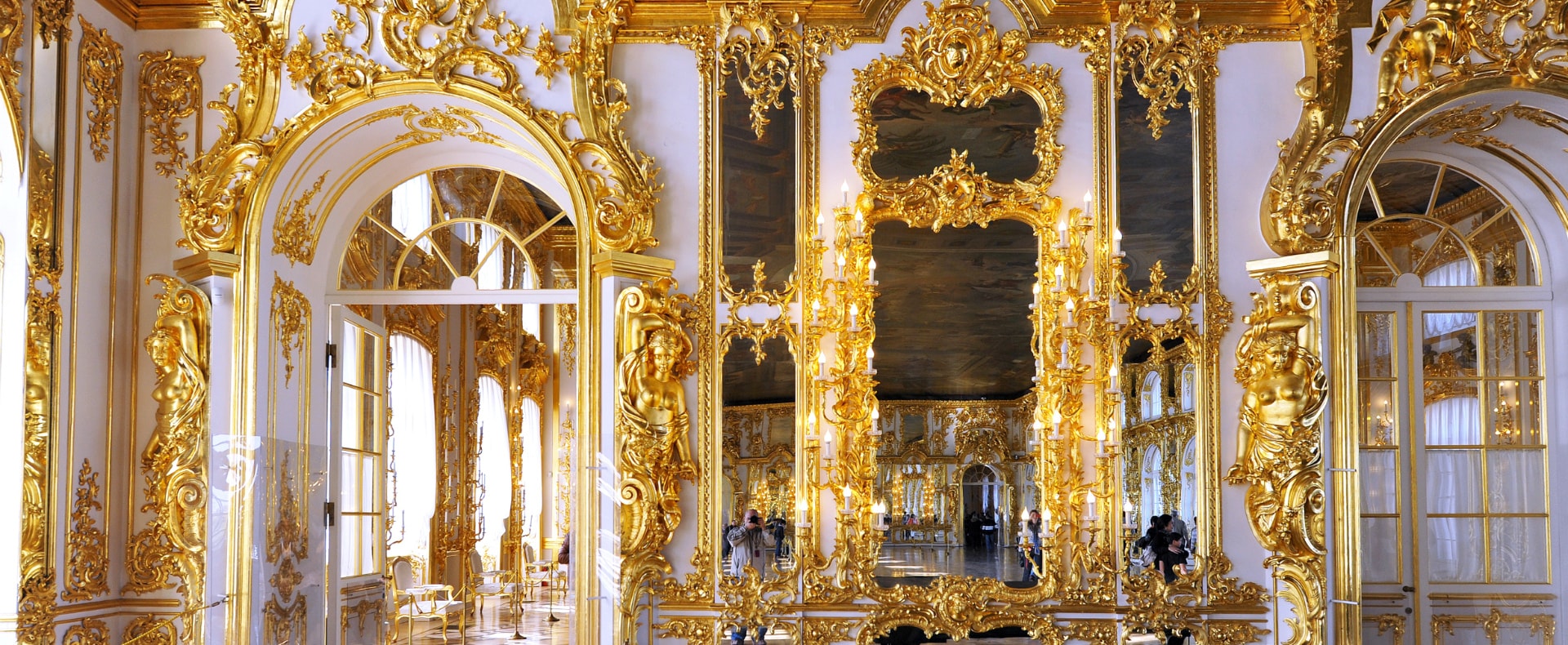Why Visit Catherine's Palace
In the 1600s, before the rise of Peter the Great, there were many fortified manors on the land around present-day St. Petersburg. Among them was Saari, which in Finnish meant “High Ground” or “Island”. When Peter the Great finally took Ingria he gave Saari over to his new wife, Catherine, in 1708.
Nearly a decade later, in 1717, Catherine had German architect Johann Friedrich Braunstein created a new Summer Palace at Saari (renamed Tsarskoye Selo or Tsar’s Village), for “her pleasure.” The resulting structure served Catherine and her niece Anna during their reigns in the first half of the 18th century, yet Elizabeth, daughter of Peter the Great and Catherine I, found the original building not to her liking, and had it destroyed.
The royal home was replaced with a new Rococo-style palace designed by Bartolomeo Rastrelli, with extravagant exteriors gilded with over 100 kilograms of gold, disproportionate shapes, and long, heavy architectural elements.
Indeed, it was rumored that the roof was completely covered with the valuable metal, lending to Elizabeth’s reputation that she was one of the most spendthrift monarchs ever. A total of 1.6 million rubles was spent on the construction (an enormous sum at the time). Moreover, it is said that the palace was pulled down and rebuilt six times during construction.
Among the items Elizabeth decided to retain was the famed Amber Room. The original room, however, lasted only until World War II. When the Germans besieged Leningrad, the Wehrmacht set up its headquarters at the nearby Alexander Palace.
Despite a hurried effort by the Soviets to disguise the room with simple wallpaper (they found that the panels were not easily removed without breaking them), the invaders uncovered this treasure among the many others left behind.
What happened to these rare panels after this greatest of artistic theft remained something of a mystery. In any case, the Amber Room was reconstructed with new amber panels in a project that took nearly a quarter century to finish.
Begun in 1979 using black-and-white photographs of the installed panels taken before the Nazi invasion, its restoration, as with the original installation, was also a joint German and Russian project. Indeed, more than 3.5 million USD was donated to the project.






